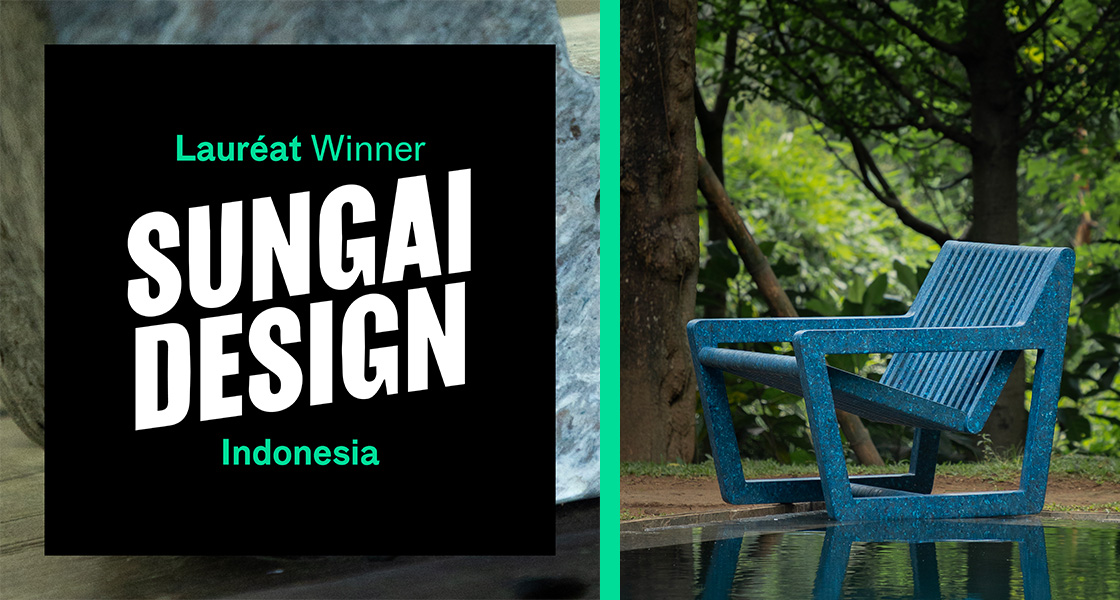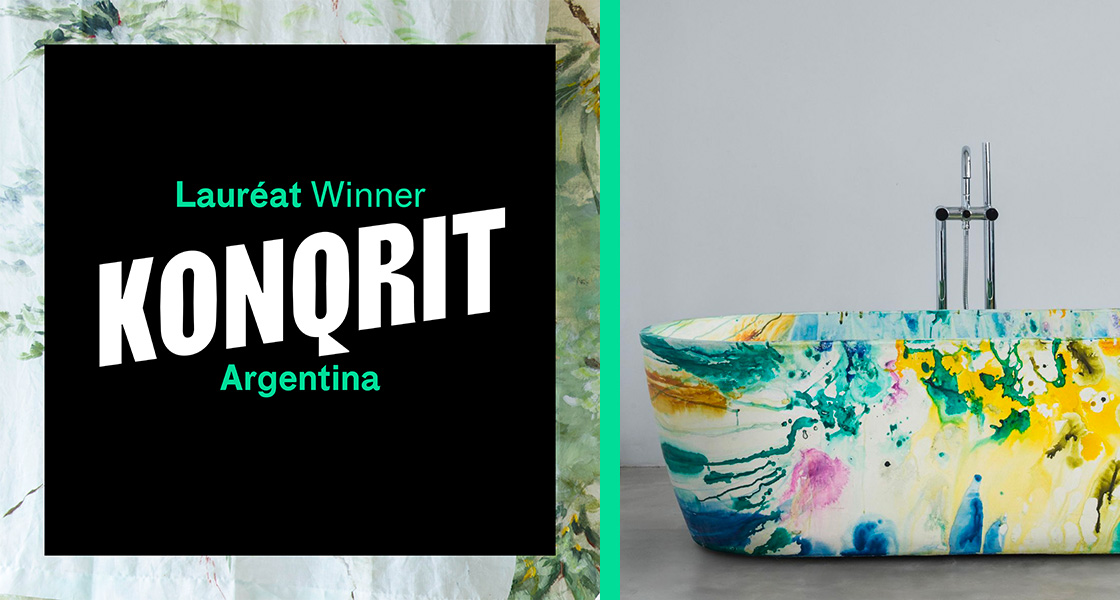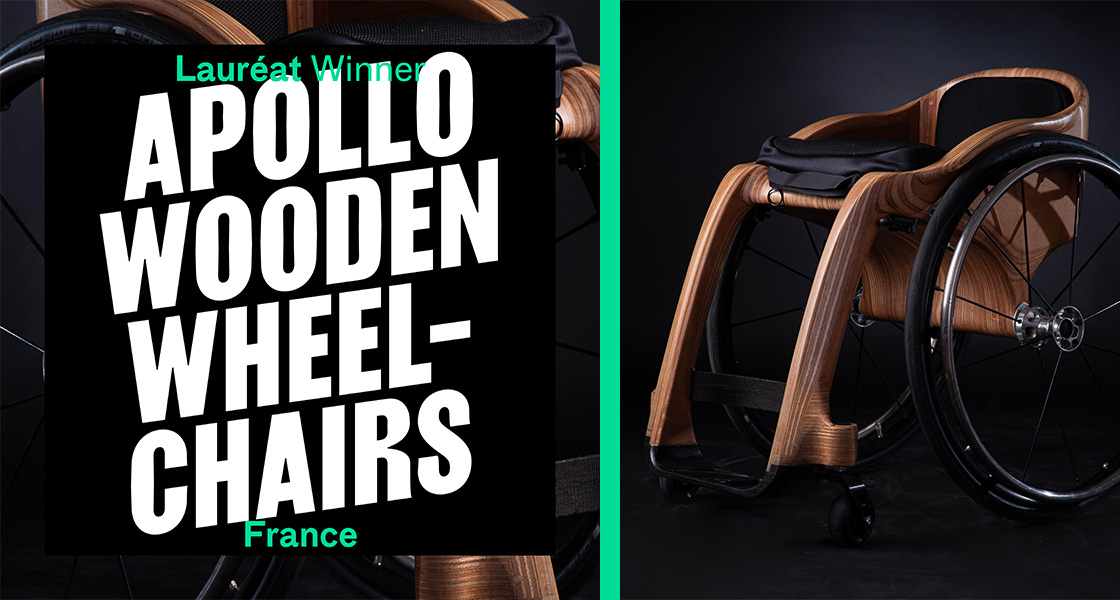Maison&Objet Future On Stage: AND THE BRAND NEW BRANDS ARE…
Published on 4 July 2024

The Future On Stage springboard offers a resilient and innovative start to 2024. The top three performers of this 5th edition are young winners providing concrete responses to evolving usage with a strong societal stance. Discover hyper-creative Digital Native Vertical Brands in the dedicated pavilion from 5 to 14 September.

Sungai Design
What it is: Ultra-durable seating made from river plastic.
Made in: Bali
Brand Story:
After two trips to Indonesia, Kelly, Gary and Sam Bencheghib decided to settle there in 2005. “The beach was our backyard, and we couldn't stand to see it getting dirtier, so we started picking up trash. We never thought it would become our life’s work,” Kelly recalls. As students—two in business school and the third in documentary filmmaking—they founded Sungai ("river" in Malay) Watch in 2020 to tackle the plastic pollution crisis in Bali, which has 372 rivers lined with illegal dumpsites. In the archipelago, 275 million inhabitants dump up to 14 million tons of trash into waterways annually. In the world's fourth most populous country, 60% of the population lacks waste collection services. Hence, the environmental foundation installs filtering barriers on rivers. The task is monumental. Now 31, 29, and 27, Kelly, Gary, and Sam pressurize major multinationals responsible for the waste.
In recent months, the Parisian-born trio, now dividing their time between Bali, Paris, and New York, have paved the way for a new era of sustainable design. They present Ombak, a robust, hand-polished, and assembled seat. “We set up the entire chain from A to Z: collection, sorting, upcycling, and education. We employ 140 people for the foundation and 20 for the design sector.” How do they explain the success of their first creation? “Our family is steeped in design and architecture. Our parents raised us in a showroom apartment with beautiful furniture and objects. We must have been influenced.” The chair that saved the waters: its story from the Island of the Gods is already legendary. We eagerly await the launch of its smaller sibling in September: the stool.
Innovative Idea: More than just the river filtering barriers preventing debris from reaching the ocean, it’s their design that makes this French trio globally known. Their main patrons are Americans.
Flagship Product: The Ombak chair, meticulously sculpted by artisans, at a rate of one per day. Each is composed of 28 to 30 kg of recycled plastic.
Buzz Moment: A canoe trip video on a trash-filled river catches the Indonesian president's attention, leading to a seven-year cleanup program mobilizing seven thousand soldiers!
THE INTERVIEW
What makes Sungai Design revolutionary?
Kelly Bencheghib: In our sorting warehouses, plastic bags that couldn't be recycled in Indonesia piled up. We figured out how to recycle them ourselves with the Dutch platform Precious Plastic. We wanted to create an unbreakable object to fund our cleanup activities. The chair became the obvious choice. We named it Ombak, and its reception was beyond our imagination!
What are you preparing for the Future On Stage pavilion?
KB: A new green color for the Ombak and a stool to make Sungai Design more accessible in interiors, especially in the West where spaces are smaller compared to large Indonesian homes.
What's next?
KB: We will collaborate with designers, staying as open and flexible as possible. We're working on polystyrene and have co-produced tire sandals with Indosole. Finally, we're in talks with a U.S. university, so we're seeking ways to make our production more industrial to meet demand!
sungaidesign.com

Konqrit
What it is: “Works of art” bathtubs and sinks.
Made in: Buenos Aires
Brand Story:
When designing her house in 2020, Cecilia Garcia Galofre, a textile consultant, wanted to create spaces connecting with the present. The bathroom, the home's most intimate place, seemed ideal for this relaxation. Unable to find anything suitable locally or internationally, she took on the project herself, meeting engineers for formulation, artisans for molds, and artists for motifs on her bathtub’s exterior and interior surfaces. “It took so much time, money, and energy that I wondered what to do with this little factory I had on my hands!” After two years of developing the product for personal use, Cecilia launched Konqrit, thinking others might be interested.
As a curator, she offers customizable, unique, bespoke interventions for clients wanting a strong identity for their bathrooms, as significant as for other home areas. This breathes new life into this intimate space, offering an unprecedented experience, even in the luxury segment. Small wooden furniture complements the use of this relaxation area. Cabinetmakers at Konqrit have learned to work with noble, natural, versatile, and durable concrete materials like quartz and white cement. It is now possible to experience a different idea of bathing, the body immersed, communing with design, art, and craftsmanship.
Innovative Idea: A breath of fresh air for bathrooms with exclusive bathtubs signed by artists.
Flagship Product: Black and white tie-dye motif sinks.
Buzz Moment: Despite holding an NBA business degree, Cecilia launched Konqrit without a future plan, “like an explorer.” Things moved quickly: people loved it, attended her workshops, the press covered it, and she flew to Milan.
THE INTERVIEW
What makes Konqrit revolutionary?
Cecilia Garcia Galofre: No brand works with artists in a space as private as the bathroom. Seeing the bathtub from the outside gives a first impression, and once immersed, it’s a different experience. That’s unprecedented. My job in fashion taught me to have new ideas constantly. In this industry, you’re always chasing seasonal changes that upend creation every six months. Twice a year, you need fresh proposals. The motifs on my bathtubs evolve with the times.
What are you preparing for the Future On Stage pavilion?
CGG: I will present the “Inmersión II” bathtub decorated by Martin Reyna, an Argentine artist based in Paris. I find his work very poetic.
What's next?
CGG: Currently, I primarily work B2C with clients in Argentina. I want to expand collaborations with artists and architects internationally, improve production capacities, and grow the team to support export increases. I’m exploring possibilities to establish a workshop in Europe since bathtubs are not easy to transport! We produce on demand to avoid overproduction and encourage sustainable manufacturing and consumption practices. We aim to continue developing and strengthening our goals with sustainable and socially responsible initiatives aligned with the Sustainable Development Goals (SDGs) to contribute to environmental preservation and people’s well-being.
konqrit.com

Apollo Wooden Wheelchairs
What it is: Stylish wheelchairs that change perceptions.
Made in: Bois-Colombes
Brand Story:
Paul de Livron became paraplegic after a climbing accident. “After ten years of searching for what to do with my life, I had an epiphany in front of a CNC machine at a cabinetmaker’s workshop.” It suddenly seemed obvious to bring beauty and better well-being into the lives of wheelchair users. “It’s important to create objects that look less like medical equipment.” His engineering degree from Arts et Métiers provided puzzle pieces, but Paul is self-taught in materials and design. At 32, he developed a technique to manufacture the world’s only wooden wheelchairs, the most stylish seats for winning an Olympic medal. The beauty lies in the design, craftsmanship, and symbolism. Two wooden okoumé wheelchairs contain charred beams from Notre Dame de Paris. Miraculously, it changes people’s perceptions.
Apollo has two markets to develop. A luxury market for the West: “A wheelchair for special occasions because, right now, it’s as if we only have one pair of shoes!” A low-tech market for developing countries: “A high-performance wheelchair is an unattainable dream for many. In a Calcutta dispensary created by Mother Teresa, I saw seventy people sharing three large senior tanks. I plan to launch locally produced wheelchairs that can do anything, every day, like a skateboard.” Paul de Livron is sought after in many countries to give disabled people the chance to reintegrate into society.
Innovative Idea: Arguably the world’s most beautiful wheelchairs.
Flagship Product: Only prototypes for now. But their fabrication requires simple tools, ideal for training a team of people in professional reintegration or workers with disabilities.
Buzz Moment: Paul gifted Pope Francis a wheelchair with armrests made from charred beams of Notre Dame de Paris. Since then, His Holiness has been a project patron.
THE INTERVIEW
What makes Apollo revolutionary?
Paul de Livron: Wooden wheelchairs disappeared in the 1950s, replaced by metal structures better suited for mass production. Today, wood opens the door to unlimited innovative designs. It’s possible to design a style tailored to each user, all in curves. The best compliment I’ve received is, “It almost makes you want to be in a wheelchair.” Like people wearing glasses without correction, as a fashion accessory.
What are you preparing for the Future On Stage pavilion?
PL: I’ll present Apollo 4, my new, refined prototype. I’ve gained experience working with a different wood. It’s the first model I’m producing in multiple copies. Two will be showcased in the pavilion with customizable refinements. One is a special Paralympic Games edition with a French flag on the back, and the other is a flying wheelchair with sculpted wings like the god Hermes and oak veneer from Notre Dame beams recovered from the renovation site for a special edition as 2024 marks the cathedral’s reopening.
What's next?
PL: I’m training an apprentice to manufacture his Apollo 4 model. I see myself not as an industrialist but as a design office providing technical expertise and market demonstrations. I need support for production and marketing. The wheelchair gifted to the Pope illustrated that even at the Holy See, medicalized wheelchairs lack aesthetics and comfort. I’m also launching wooden crutches.
apollo.fr